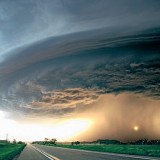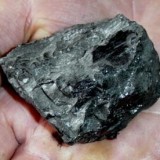Muzzling science and scientists is ultimately an exercise in futility, an effort that inevitably causes more trouble than the initial discomfort of confronting the reality of evidence. History has shown this repeatedly. The Church didn’t like the heliocentric ideas of Copernicus and the reasoned celestial observations of Galileo so it silenced both scientists. But 400 years later the same Church was forced to make a belated and humiliating apology. Indeed, the sun is the centre of our solar system and the planets do rotate around it as Galileo determined.
History hasn’t dulled the impulse of established interests to suppress scientific inquiry and muzzle scientists. Scientific analysis of Newfoundland’s North Atlantic cod stocks warned that the resource was being overfished. But governments found the political and economic inconvenience was too costly to confront. The result was a collapse of the fishery and the ruin one of the greatest food resources on the planet.
The George W. Bush administration in the US tried the same tactic with global climate change. The weight of scientific evidence indicated that greenhouse gas emissions were warming the planet. But the remedy didn’t match the political ideology of the time so the warnings were suppressed, diluted and contested. Valuable time was lost. Opportunities were wasted. Now, as the mechanics of global warming are more clearly understood and the dire consequences are more accurately measured, the folly of denying the initial scientific evidence verges on the criminal.
The same process of muzzling science and scientists is now occurring on BC’s West Coast as the impact of salmon farms on wild salmon is being examined. The issue of disappearing wild salmon is complex. But the complexity is abetted – as evidence from the Cohen Commission on the disappearance of Fraser River sockeye salmon is revealing – by the Department of Fisheries and Oceans’ conflicting mandate to both advocate for salmon farming and to regulate it. A political ideology has decided that a farmed and wild fishery are compatible so evidence indicating otherwise is misconstrued, neglected or suppressed. These contradictory objectives have created a condition in which some of the evidence given by DFO scientists at the Cohen Commission seems confused, even contradicting the findings of their own previous research. Meanwhile, the migration of employees between the supervised and the supervisor creates a porous relationship that compromises DFO’s objectivity and credibility.
This politicization of science is stunningly exemplified in the government’s treatment of Dr. Kristi Miller, a molecular geneticist with DFO investigating the gradual decline in Fraser River sockeye. She has been in charge of a $5.3 million research program in Nanaimo’s Pacific Biological Station, and her work was significant enough to be published as an acclaimed article in the prestigious magazine, Science . The January 2011 article, Genomic Signatures Predict Migration and Spawning Failure in Wild Canadian Salmon, hypothesizes that “the genomic signal associated with elevated mortality is a response to a virus infecting fish before river entry and that persists to the spawning areas.”
Although Dr. Miller’s article did not specifically implicate salmon farms, the decline in Fraser River sockeye happened to occur in the generation following a 1992 outbreak of viral disease in farmed chinook, an event that was serious enough to bankrupt some private operations and eventually end the further farming of chinook.
Did a viral infection in salmon farms cause the decline in Fraser River sockeye? Answering this question would seem to be both urgent and critical. Discussing and exploring Dr. Miller’s study with the scientific community would seem to be crucial in understanding the relationship between farmed and wild salmon. DFO initially thought so, promoting this dialogue by contacting over 7,400 journalists about her study.
Then politics intervened. The Privy Council Office, a supporter of the Prime Minister’s Office, suddenly prohibited Dr. Miller from talking to her colleagues and the press about her study. She was refused permission to attend a university closed session on salmon health. This muzzling occurred on the pretext that such publicity would compromise the evidence she would be giving before the Cohen Commission, an explanation commonly dismissed by academics and scientists as absurd. Even following her presentation of evidence, a spokesman for DFO would not guarantee that the order of silence would be rescinded.
Meanwhile, salmon farms that originally refused to give samples of their fish for genomic testing have finally agreed to comply so Dr. Miller can determine if the viral signature in the farmed fish is the same as in the infected sockeye. But this delaying tactic now means that the test results will not be available until after the Cohen Commission has finished receiving evidence. T complicate matters, funding for Dr. Miller’s continued research is not forthcoming from the government’s Treasury Board, a curious response to an investigation purported to be one of the most important coming from DFO in years. And her unfunded research cannot find the $18,000 required for the genomic testing. Neither will DFO allow her to receive outside funding, a course of events that should lead any objective observer to be suspicious of political interference.
Political interference, even at its forceful, can only delay scientific inevitabilities. Ideologies, even at their most fervent, eventually look foolish in the light of evidence. If West Coast fisheries – both farmed and wild – are to be properly managed, DFO must retreat from its presently conflicted position to a solely scientific one. Only then can it maintain its credibility and authority. For anyone considering the folly of its current strategy, simply review the lessons of history. Importing Some Gross National Happiness from the Bhutanese
by Ray Grigg
The industrialized world is a funk these days. If it is the worrisome realization that this economic system is beginning to show some serious flaws, then maybe the time has come to give some serious consideration to the Bhutanese notion of Gross National Happiness. Even the Bhutanese must have some bad days, but nothing compared to the protracted period of down experience by the industrialized world.
America, the world’s cultural and economic pacesetter is sinking under the weight of debt and the illusion of entitlement. US pessimism is soaring and most think their country is “on the wrong track”, a sign that they are ready for insight and change. Indeed, their attitude is also shared by the Europeans and Japanese. Even the ascendent Chinese, despite their booming economy, are getting nervous about the threatening chaos around them. The world’s predominant financial structures are in a dangerous and precarious condition. The quest for endless wealth has combined with rampant greed to produce an unprecedented monetary mess ‹ all corrective strategies have been unsuccessful and the overwhelming weight of accumulated national debt seems to be promising a future of economic gloom.
Global weather is getting more extreme, destructive and disruptive. A plethora of environmental problems continue to proliferate in both number and complexity. A soaring global population is creating resource stresses while falling populations in developed countries are causing another set of challenging demographic problems. Refugees are on the move, terrorism has created an atmosphere of tense alertness, and a spreading philosophy of materialism seems to be creating a pervasive mood of insatiable hunger. A transition from Gross Domestic Product (GDP) to Gross National Happiness (GNH) may not solve all these problems but it offers a helpful beginning.
The Bhutanese realized the shortcomings of GDP when they transitioned from a kingdom to a democracy some 40 years ago. In a recent gathering in Bhutan’s capital, Thimphu, dozens of their experts met to review their country’s progress toward GNH. Their conclusions should be instructive to the rest of the planet wrestling with escalating unhappiness.
First, they recognized that economic progress is not inherently bad. If it elevates the poor by providing clean water, food, health care, education and employment, then it serves to advance happiness (Jeffrey Sachs, Globe & Mail, Aug. 30/11).
Second, raising GDP is not synonymous with raising happiness, particularly if escalating the amount of money increases the distance between the rich and poor, creates social classes, robs people of equal power and influence, and causes environmental degradation.
Third, “happiness is achieved through a balanced approach to life by both individuals and societies,” writes Jeffrey Sachs about the Bhutanese. “As individuals, we are unhappy if we are denied our basic material needs, but we are also unhappy if the pursuit of higher income replaces our focus on family, friends, community, compassion and maintaining inner balance. As a society, it is one thing to organize economic policies to keep living standards on the rise, but quite another to subordinate all of society’s values to the pursuit of profit.”
Fourth, “global capitalism presents many direct threats to happiness.” Not only does it destroy the natural environment, causing widespread pollution and disrupting climate, but it directly and indirectly suppresses the evidence of this destruction to advance its own profitable purposes. Its monolithic presence in industry, its impersonal factory farming, its expansion into media, and its powerful advertising all contribute to a consumer society on the treadmill of materialism and dissatisfaction. The machinery of its marketing creates addicts who are compelled to purchase the products that capitalism sells: fast food, commercial entertainment, professional sports, novelty fashions, alcohol, tobacco and gambling. The result is a society stuffed and starved to death, simultaneously unhealthy, obese, socially dysfunctional and unhappy. “The mad pursuit of corporate profits,” Sachs suggests, “is threatening us all.”
And fifth, the Bhutanese advise vigilance, the importance of identifying the ideologies and practices that threaten happiness, that reduce the well-being of both individuals and society. Humans and the incredible natural world in which we live are more important than any system, particularly if that diminishes the quality of life, together with our appreciation and respect of the living communities that contains and sustain us. Economies should serve happiness, not vice versa.
The Bhutanese have discerned that we must not get lost on our journey through life. They acknowledge that we need a basic affluence to survive and thrive. But, if an unfeeling and unnatural ideology compels, oppresses and stresses us while starving us of intimacy and meaning, then we cannot be human and happy. As we lose our sense of proportion and sanity, then we begin to lose our capacity to be caring and sociable, to be judicious and wise. Compassion, honesty, trust and peace are the hallmarks of a healthy society, and an inner sense of balance is prerequisite for the outer balance we call a harmonious society and a sustainable environment. Anything that leads us away from these essential qualities is an empty and dangerous ideology.
Riches take many forms. But the most valuable – and the best measure of a life well lived – is the profound contentment that comes from engaging respectfully and happily with our natural world and with each other.










